Suborder Serpentes Subfamily Colubrinae Higher classification Masticophis Order Scaled reptiles | Subphylum Vertebrata Genus Masticophis Phylum Chordata Rank Species | |
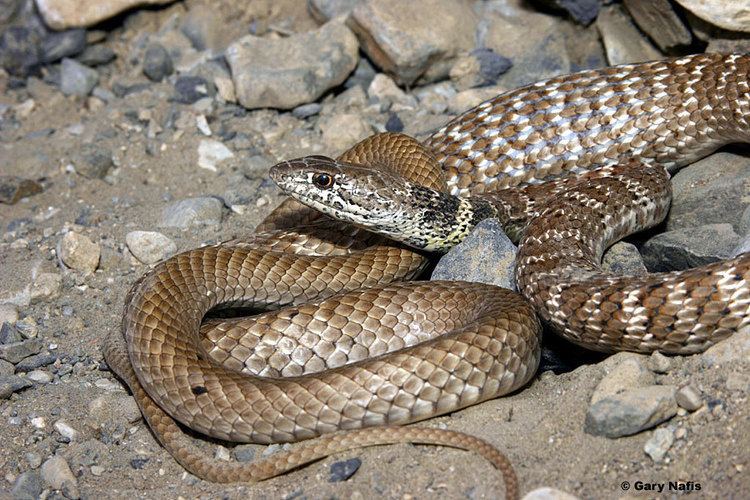 | ||
Similar Snake, Masticophis, Reptile, Coluber, Coluber constrictor | ||
Eastern coachwhip snake masticophis flagellum flagellum shaw 1802
Masticophis flagellum is a species of nonvenomous colubrid snake, commonly referred to as the coachwhip or the whip snake, which is endemic to the United States and Mexico. Seven subspecies are recognized, including the nominotypical subspecies.
Contents
- Eastern coachwhip snake masticophis flagellum flagellum shaw 1802
- Masticophis flagellum coachwhip or whip snake
- Geographic range
- Description
- Habitat
- Behavior
- Subspecies
- Myths
- References
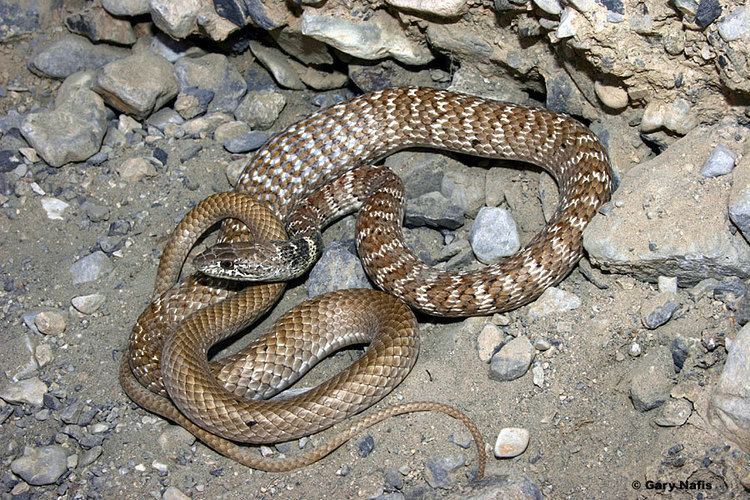
Masticophis flagellum coachwhip or whip snake
Geographic range
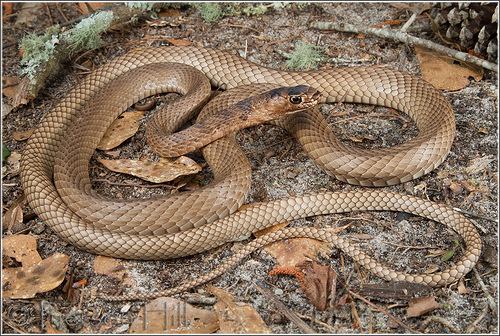
Coachwhips range throughout the southern United States from coast to coast. They are also found in the northern half of Mexico.
Description

Coachwhips are thin-bodied snakes with small heads and large eyes with round pupils. They vary greatly in color, but most reflect a proper camouflage for their natural habitat. M. f. testaceus is typically a shade of light brown with darker brown flecking, but in the western area of Texas, where the soil color is a shade of pink, the coachwhips are also pink in color. M. f. piceus was given its common name because specimens frequently, but not always, have some red in their coloration. Coachwhip scales are patterned so at first glance, the snake appears braided. Subspecies can be difficult to distinguish in areas where their ranges overlap. Adult sizes of 127–183 cm (50–72 in) are common. The record sized specimen, of the Eastern coachwhip race, was 259 cm (102 in). Young specimens, mostly just over 100 cm (39 in) in length, were found to have weighed 180 to 675 g (6.3 to 23.8 oz), whereas good-sized mature adults measuring 163 to 235 cm (64 to 93 in) weighed in at 1.2 to 1.8 kg (2.6 to 4.0 lb).
Habitat
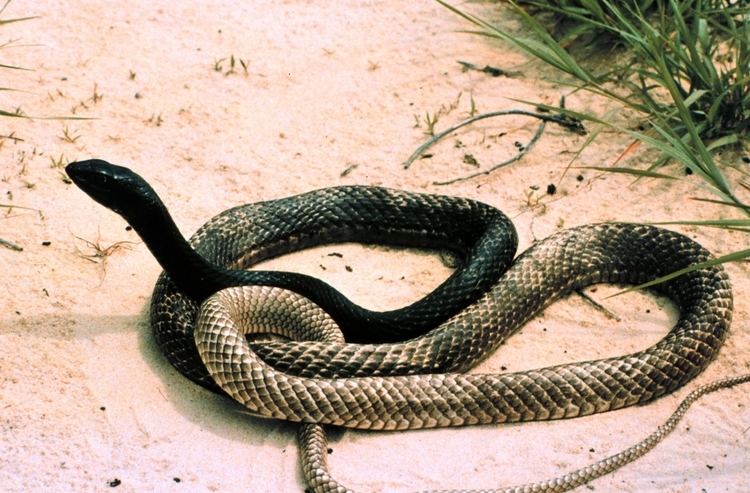
Coachwhips are commonly found in open areas with sandy soil, open pine forests, old fields, and prairies. They thrive in sandhill scrub and coastal dunes.
Behavior
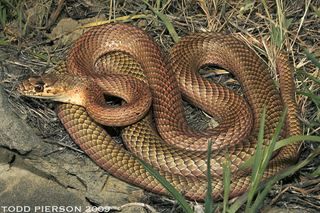
Coachwhips are diurnal, and actively hunt and eat lizards, small birds, and rodents. Coachwhips subdue prey by grasping and holding them with their jaws and do not use constriction. They tend to be sensitive to potential threats, and often bolt at the first sign of one; they are extremely fast-moving snakes. They are curious snakes with good eyesight, and are sometimes seen raising their heads above the level of the grass or rocks to see what is around them. Can slither up to 15 mph.
Subspecies
Myths
The primary myth concerning coachwhips, that they chase people, likely arises from the snake and the person both being frightened, and both just happening to be going the same way to escape. Coachwhips are fast snakes, often moving faster than a human, and thus give an impression of aggression should they move toward the person.
The legend of the hoop snake may refer to the coachwhip snakes.
Another myth of the rural southeastern United States is of a snake that, when disturbed, would chase a person down, wrap him up in its coils, whip him to death with its tail, and then make sure he is dead by sticking its tail up the victim's nose to see if he is still breathing. In actuality, coachwhips are neither constrictors (snakes that dispatch their prey by suffocating with their coils) nor strong enough to overpower a person. Also, they do not whip with their tails, even though their tails are long and look very much like a whips.
Their bites can be painful, but generally are harmless unless they become infected.
In parts of Mexico, where ranching is a way of life, these snakes are believed to wrap around the legs of cows and feed on their milk as if suckling leaving the nipple dry. They will also hook on any other mammal that produces milk, leaving the young baby dehydrated.
Ranchers also tell stories of "chirrioneras", which hypnotize women then latch onto their breasts to feed. If the woman has a crying hungry baby the snake would stick their tail in the babies mouth to keep the baby quiet while feeding, then leave, undetected. This leaves the baby malnourished and getting weaker while the mother cannot feed her baby because her breasts have been sucked dry. The story goes that the only way to know if the snake has been there is if the baby has sores around the mouth.
